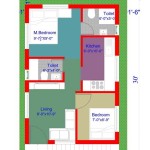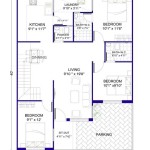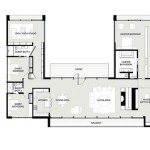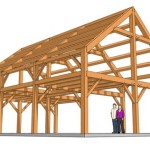Floor Plans for Small Living Rooms
When designing a small living room, it's essential to maximize space and create a comfortable and functional area. Floor plans play a crucial role in achieving this goal, as they provide a blueprint for arranging furniture, fixtures, and other elements within the room.
Space-Saving Considerations
In small living rooms, every square foot counts. Consider the following space-saving techniques:
- Multi-purpose furniture: Look for furniture that serves multiple functions, such as ottomans with built-in storage or sofas that convert into beds.
- Wall-mounted shelves: Free up floor space by mounting shelves on walls for storage and display.
- Mirrors: Mirrors reflect light and create the illusion of a larger space.
Furniture Arrangement
The arrangement of furniture can significantly impact the functionality and ambiance of a living room. Here are some tips:
- Focal point: Designate a focal point, such as a fireplace or entertainment center, and arrange furniture around it.
- Conversation areas: Create cozy seating arrangements where people can engage in conversation, such as a couch facing two armchairs.
- Flow of movement: Ensure there is ample space for people to move around the room without bumping into furniture or obstacles.
Lighting
Proper lighting can enhance the appearance and functionality of a small living room. Experiment with different types of lighting:
- Natural light: Maximize natural light by using large windows or skylights.
- Ambient lighting: Create a warm and inviting atmosphere with ambient lighting, such as recessed lights or chandeliers.
- Task lighting: Provide focused lighting for specific activities, such as reading or crafting.
Color and Patterns
Color and patterns can influence the perceived size of a room. Consider the following tips:
- Light colors: Light colors, such as white, beige, and pastels, make a room appear larger.
- Neutral backgrounds: Use neutral colors for walls and larger furniture pieces to create a versatile and spacious backdrop.
- Small patterns: Small patterns, such as stripes or geometric designs, can add visual interest without overwhelming the space.
Additional Tips
- Declutter: Remove unnecessary items to create a sense of spaciousness.
- Vertical storage: Maximize vertical space by using tall shelves and cabinets.
- Accessorize with caution: Limit the number of accessories to avoid clutter and maintain a cohesive design.
Conclusion
Designing a small living room requires careful planning and attention to detail. By following the principles outlined in this article, you can create a space that is both functional and inviting, maximizing the potential of every square foot.

Small Living Room Layout 8 Design Tips

Small Living Room Floor Plan By An Experienced Architect

10 Living Room Layouts Ideas Genius Apartment Therapy

Pin Page

Living Room Floor Plans Types Examples Considerations Cedreo

Living Room Mistakes To Avoid 3 Layouts For Small Rooms Big

Living Room Layout Ideas

How To Lay Out An Awkward Living Room Ajai S That Will Save You A Lot Of Agony Emily Henderson

My Tiny Living Room Has Perplexed Me For 20 Years Laurel Home

L Shaped Living Room Layout Ideas How To Arrange Your Furniture From House Home








